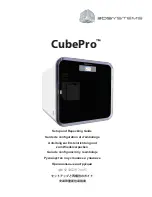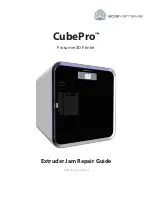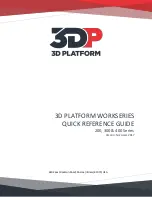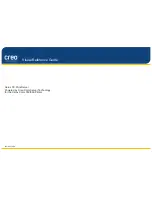
Page 1 of 2
GENERAL DESCRIPTION
The DataPlot model PM
1416 Print Mechanism incorporates a thermal printhead with
416 heat element dots arrayed in a single line across the width
of the paper. The mechanism holds a supply roll of 4.5" wide
thermal paper and moves the paper past the printhead in steps
of approximately .005 inch. When driven by a DataPlot CB
1416 or CB 1100 Control Board, the print mechanism steps the
paper forward, pausing after each step to heat selected dots. In
this manner, a dot matrix representation of alphanumeric and/or
graphic data can be printed.
MOUNTING
The DataPlot model PM 1416 print mechanism is designed to
mount to the rear surface of a panel, using four 6-32 screws.
The mounting and cutout dimensions are shown on the
reverse side of this sheet. If you prefer to use mounting studs,
we can eliminate the mating PEM nuts and you can use nuts
to secure the print mechanism to the panel.
CONTROL BOARD CONNECTION
This print mechanism is designed to operate reliably when
driven by the B-G Instruments' DataPlot model CB 1416 or
CB 1100 control board or another board specifically approved
by B-G Instruments for that purpose. Attempting to operate it
in any other way may cause permanent damage that would not
be covered by warranty. With all system power off, attach the
supplied ribbon cable between the 26-pin printhead connector
and connector J3 on the control board, being sure to observe
correct polarity by aligning the red dots on the connectors with
those on the cable ends. Also connect the 8
RESOLUTION
The 416 thermal dot elements are uniformly spaced at 100 dots
per inch, with centers 0.010 inches apart. The mark made by
each element is slightly larger than this spacing, so that the
printer can print solid lines and solidly filled areas. The
standard mechanism advances the paper approximately 0.005
inches between steps, providing a dot matrix pitch of .010"
across the paper by .005" along its length. The CB 1416 and
CB 1100 Control Boards and software use this dot matrix to
produce printed characters and graphic images.
PAPER LOADING
A paper sensor in the PM 1416 provides signals that are used .
by the control board to stop printing when paper runs out and
to "autoload" a new paper roll. To load the printer, be sure the
power is on and insert the paper end into the slot behind the
rubber platen with the sensitive side (outside on the roll) away
from the platen. When the paper is inserted, the platen will run,
pulling about 2 inches of paper through. On print mechanisms
with a head lift tab, you may also install paper by lifting the
printhead and inserting the paper manually.
MAXIMUM PRINT SPEED
When driven by a CB 1416 or CB 1100 Control Board, the
PM 1416 Print Mechanism can print approximately 125 dot
rows per second (somewhat slower for row s containing more
than 64 printing dots). At .005" per step, the maximum paper
speed is about .6 inches per second. Rows of 5x7 characters
can be printed at a rate of about 5 lines/second.
pin stepper motor connector cable to
connector J1 on the control board. This
connector is keyed to facilitate correct
polarity assembly. Refer to the control
board data sheet for instructions on
applying power and operating the printer.
The standard length of these cables is 18
inches. Contact us if you need shorter or
longer cables in your application.
PM1416-PTVF
Print Mechanism
DataPlot Print Mechanism
Model PM1416
Technical Data and Instructions
Release C, March 15, 2000




















